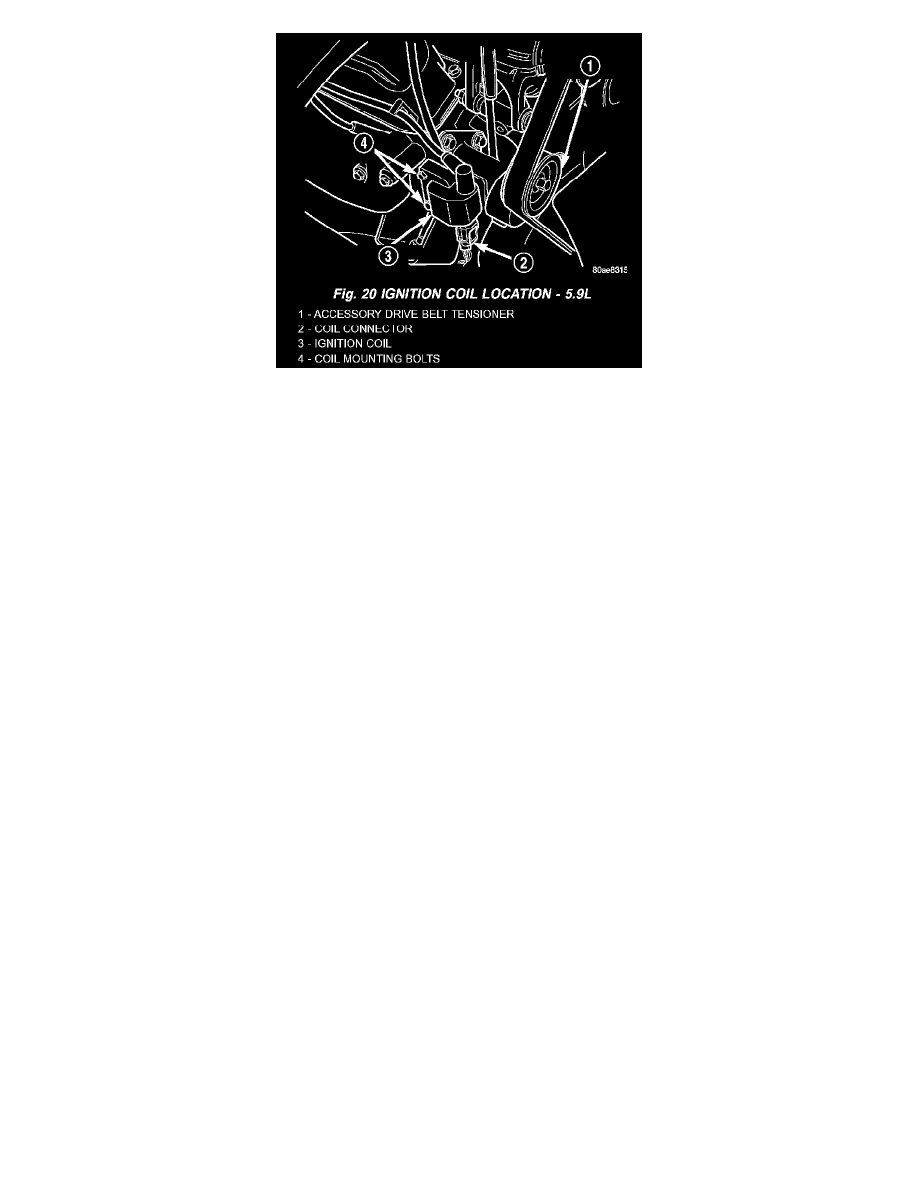RAM 1500 Truck 4WD V8-5.9L VIN Z (2002)

Fig. 20 Ignition Coil Location - 5.9L
5.9L
A single ignition coil is used. The coil is not oil filled. The coil windings are embedded in an epoxy compound. This provides heat and vibration
resistance that allows the coil to be mounted on the engine.
A single ignition coil is used. The Powertrain Control Module (PCM) opens and closes the ignition coil ground circuit for ignition coil operation.
Battery voltage is supplied to the ignition coil positive terminal from the ASD relay. If the PCM does not see a signal from the crankshaft and
camshaft sensors (indicating the ignition key is ON but the engine is not running), it will shut down the ASD circuit.
Base ignition timing is not adjustable on any engine. By controlling the coil ground circuit, the PCM is able to set the base timing and adjust the
ignition timing advance. This is done to meet changing engine operating conditions.
KNOCK SENSOR
The 2 knock sensors are bolted into the cylinder block under the intake manifold. The sensors are used only with the 3.7L engine.
Two knock sensors are used on the 3.7L V-6 engine; one for each cylinder bank. When the knock sensor detects a knock in one of the cylinders on
the corresponding bank, it sends an input signal to the Powertrain Control Module (PCM). In response, the PCM retards ignition timing for all
cylinders by a scheduled amount.
Knock sensors contain a piezoelectric material which constantly vibrates and sends an input voltage (signal) to the PCM while the engine operates.
As the intensity of the crystal's vibration increases, the knock sensor output voltage also increases.
The voltage signal produced by the knock sensor increases with the amplitude of vibration. The PCM receives the knock sensor voltage signal as
an input. If the signal rises above a predetermined level, the PCM will store that value in memory and retard ignition timing to reduce engine
knock. If the knock sensor voltage exceeds a preset value, the PCM retards ignition timing for all cylinders. It is not a selective cylinder retard.
The PCM ignores knock sensor input during engine idle conditions. Once the engine speed exceeds a specified value, knock retard is allowed.
Knock retard uses its own short term and long term memory program. Long term memory stores previous detonation information in its
battery-backed RAM. The maximum authority that long term memory has over timing retard can be calibrated.
Short term memory is allowed to retard timing up to a preset amount under all operating conditions (as long as rpm is above the minimum rpm)
except at Wide Open Throttle (WOT). The PCM, using short term memory, can respond quickly to retard timing when engine knock is detected.
Short term memory is lost any time the ignition key is turned off.
NOTE: Over or under tightening the sensor mounting bolts will affect knock sensor performance, possibly causing improper spark control.
Always use the specified torque when installing the knock sensors.
SPARK PLUG
Resistor type spark plugs are used.
Spark plug resistance values range from 6,000 to 20,000 ohms (when checked with at least a 1000 volt spark plug tester). Do not use an ohmmeter
to check the resistance values of the spark plugs. Inaccurate readings will result.
